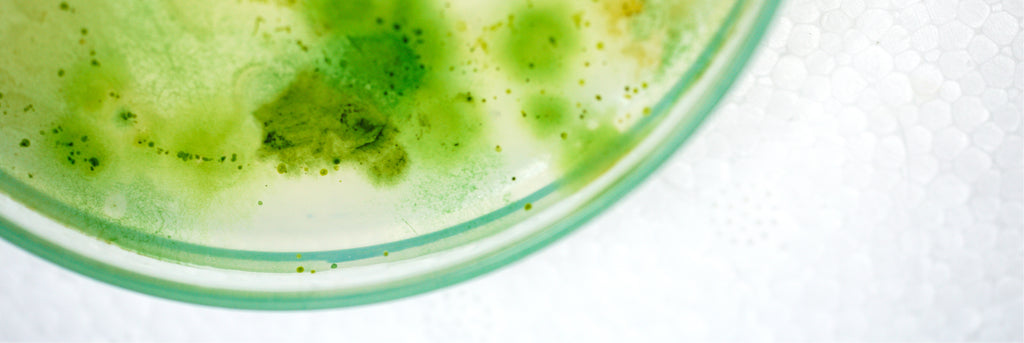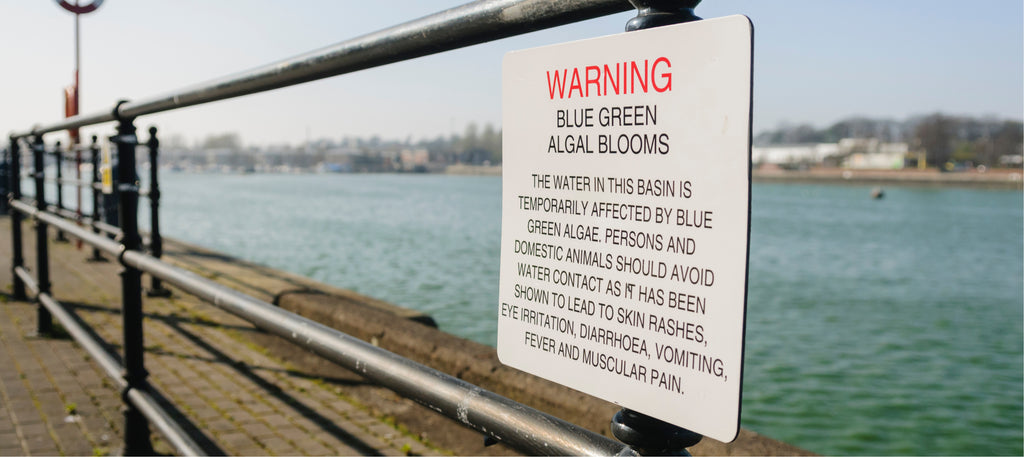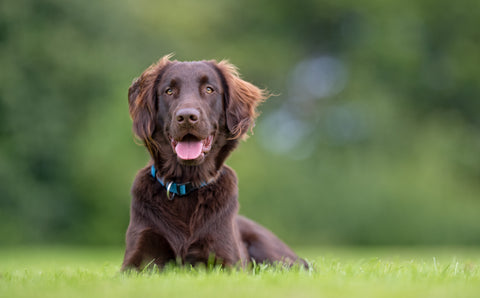
The dangers of blue-green algae for dogs
In a summer safety special, we take a look at blue-green algae, evaluate the dangers and discover how to protect your dog.
A doggy paddle in toxic water
You know how it is. You’re out enjoying the sunshine with your dog and all of a sudden, they take off at warp speed, hurtling towards a pond. Before you know it, they’ve dived in, doggy paddled around, circled a couple of Retrievers and are now coming back towards the shore, lapping at the water as they go.
But hold on. What’s that stuff on the surface of the pond? It’s some kind of lurid green weed. Could it be blue-green algae? And isn’t that dangerous for dogs?
Cause for concern?
By the time your dog’s emerged, you hope that the worst that will happen is that they’ll smell of pond water. But at the back of your mind, you’re concerned and nervously watch your pooch for signs of sickness.
How can you tell whether your dog’s swallowed poisonous water or simply swum in a perfectly innocuous weed? We take a closer look.
Under the microscope

Blue-green algae are types of bacteria called Cyanobacteria. You’ll often find these microscopic, plant-like organisms in streams, rivers, lakes and ponds, where they prefer water that is shallow and slow-moving.
The name, Cyanobacteria, is nothing to do with cyanide. It’s from the Greek for blue: ‘kyanós’.
The algae usually develop in the spring, encouraged by the increase in sunlight and higher water temperatures, and thrive in late summer. Under the right conditions, they grow quickly and form a blue-green algae bloom which looks like a floating mat on the surface of the water.
A worsening problem
By examining fossils, scientists have discovered that blue-green algae have been around for millions of years. However, there are suggestions that the increased presence of phosphorus and nitrogen in the water, caused by agriculture, untreated sewage and fertilisers, is boosting the growth of Cyanobacteria in many areas.
What colour are blue-green algae?
Sounds like a daft question, doesn’t it? But blue-green algae aren’t always the colour you’d expect. Most often, they’re a sort of sludgy green, but can also shade through to lime green and even brown or purplish red in some cases.
Beware of green, scummy water
Most frequently, though, they’re somewhere on the green spectrum. If you think of the colour of the algae you often see lurking at the bottom of a fish tank or aquarium, that’s the same bacteria, so that might help you spot them.
A certain smell
Although fresh blue-green algae can smell like newly-mown grass, as they decay, they can give off a smell of rotten vegetables. Unfortunately, as we know, some dogs are drawn towards full body immersion in stinky scents, which is another reason to watch out for it when you’re out on a walk.
Blue-green algae are toxic for dogs
When you see a sign warning of blue-green algae in a pond, you need to take it seriously. Some types of blue-green algae can kill a dog within 15 minutes to an hour.

Just this summer, a German Cross Belgian Shepherd died after drinking affected water from a pond in Wales, while a King Charles Cavalier Spaniel fell ill and died after paddling in a lake contaminated with blue-green algae in Cheshire.
Symptoms of blue-green algae poisoning
It’s heart-rending to hear of any dog dying, particularly when it’s because they were having an innocent paddle or enjoying a swim on a hot day. But it’s even worse when you know that it’s preventable.
If your dog swallows blue-green algae, or licks their fur after swimming, toxic by-products of the algae called microcystins can quickly result in liver damage or failure.
If you think your dog has ingested blue-green algae, or is showing any of the following symptoms, take them to the vet immediately.
- Vomiting
- Drooling
- Weakness
- Disorientation / confusion
- Diarrhoea
- Collapse / unconsciousness
- Seizures
- Breathing difficulties
There’s currently no antidote for blue-green algae poisoning, but your vet may give your dog fluids to help flush toxins from the body, as well as medication to help with other symptoms such as seizures, breathing problems and liver failure.
 Vets’ warning about blue-green algae this summer
Vets’ warning about blue-green algae this summer
The British Veterinary Association has reported that blue-green algae are present in bodies of water across the UK this summer, including in Moray, Midlothian, Carmarthenshire, Hampshire, Cornwall, Leicestershire, Derbyshire and Lincolnshire.
How to protect your dog
Not all blue-green algae are toxic, but it’s hard to tell which are poisonous. Therefore your best option is to prevent your dog from swallowing algae in the first place.
Particularly in summer months, when the weather is hot and water levels are low, if you see blue-green algae, assume they’re toxic.
The British Veterinary Association offers this advice:
- Look out for warning signs put up by the Environment Agency or local councils near water.
- Keep dogs on a lead and by your side around water known or suspected to have blue-green algae bloom - don't let them swim in it or drink from it.
- If your dog has been swimming outside, wash it thoroughly with clean water afterwards.
- Take your pet to a vet immediately if you are concerned it may have ingested toxic algae.

Play it safe
The effects of blue-green algae poisoning can be devastating, so this really is a case where prevention is far better than cure. If in doubt, keep your dog on a lead by your side, and play it safe by the water this summer.








